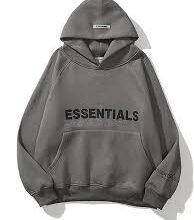
In today’s fast-paced and highly regulated work environments, the importance of employee safety cannot be overstated. A critical component of this safety is the protection of workers’ eyes, especially in industries where hazards like flying debris, chemicals, or intense light are common. Implementing a corporate safety eyewear program is not just a regulatory requirement but a commitment to your workforce’s well-being. This article delves into the essentials of setting up a successful safety eyewear program, with a particular focus on prescription safety eyewear options, and how it can enhance your company’s safety culture and productivity.
Why Implement a Corporate Safety Eyewear Program?
Reducing Workplace Injuries
One of the primary reasons for implementing a corporate safety eyewear program is to reduce the risk of workplace injuries. Eye injuries can occur in a split second and can lead to serious, long-term consequences, including blindness. By providing employees with appropriate safety eyewear, you significantly reduce the likelihood of such incidents, thereby fostering a safer work environment.
Compliance with Safety Regulations
Compliance with occupational safety standards is a legal requirement for many industries. Failure to comply can result in hefty fines, legal action, and damage to your company’s reputation. A well-structured corporate safety eyewear program ensures that your business meets all regulatory requirements related to eye protection, thus avoiding potential legal pitfalls.
Boosting Employee Morale and Productivity
Employees who feel safe at work are more likely to be productive and engaged. A safety eyewear program signals to your workforce that their well-being is a top priority, which can lead to increased job satisfaction and loyalty. Moreover, by preventing eye injuries, you reduce downtime, leading to uninterrupted productivity.
Key Components of an Effective Safety Eyewear Program
1. Assessing Workplace Hazards
Before implementing a corporate safety eyewear program, it’s essential to conduct a thorough assessment of the workplace to identify potential eye hazards. These can include:
- Flying debris: Common in construction, manufacturing, and woodworking industries.
- Chemical splashes: Frequent in laboratories, chemical plants, and healthcare settings.
- Radiation: UV, infrared, or laser exposure in welding, cutting, and medical environments.
Understanding these risks will help you determine the type of safety eyewear required for different tasks and environments.
2. Choosing the Right Safety Eyewear
Selecting the appropriate eyewear is crucial for the effectiveness of your program. Consider the following factors:
- Lens material: Polycarbonate lenses are popular due to their impact resistance and lightweight nature.
- Coatings: Anti-fog, anti-scratch, and UV-protective coatings enhance the durability and functionality of the eyewear.
- Fit and comfort: Ensure that the eyewear fits comfortably and securely to encourage consistent use by employees.
3. Incorporating a Prescription Safety Eyewear Program
Understanding Prescription Safety Eyewear
For employees who require vision correction, a prescription safety eyewear program is essential. This program ensures that employees do not have to choose between clear vision and eye protection. Prescription safety glasses combine the corrective power of regular glasses with the durability and protection of safety eyewear.
Benefits of Prescription Safety Eyewear
- Improved visibility: Corrective lenses allow employees to perform their tasks with clarity, reducing errors and increasing safety.
- Comfort and convenience: Employees no longer need to wear safety goggles over their regular glasses, which can be uncomfortable and cumbersome.
- Enhanced compliance: When eyewear is comfortable and functional, employees are more likely to wear it consistently.
4. Training and Education
Even the best safety eyewear program will fall short without proper training and education. Employees need to understand the importance of eye protection, how to properly use and care for their safety eyewear, and the specific hazards they may encounter in their roles. Regular training sessions and refresher courses should be a key component of your program.
5. Regular Maintenance and Replacement
Safety eyewear is only effective if it is in good condition. Establish a routine for inspecting, cleaning, and replacing damaged or worn-out eyewear. Ensure that employees know how to report issues and that replacements are readily available.

Implementing a Corporate Safety Eyewear Program
Step-by-Step Guide
- Conduct a Hazard Assessment: Identify all potential eye hazards in the workplace.
- Select Appropriate Eyewear: Choose eyewear that meets the specific needs of your employees and complies with safety standards.
- Incorporate Prescription Safety Eyewear: Provide prescription safety glasses for employees who require vision correction.
- Educate and Train Employees: Ensure that all employees understand the importance of eye protection and know how to use and care for their eyewear.
- Monitor and Maintain: Regularly inspect and replace safety eyewear as needed.
Frequently Asked Questions (FAQs)
1. What is a corporate safety eyewear program?
A corporate safety eyewear program is a structured initiative by an organization to provide employees with the necessary eye protection to prevent workplace injuries. This program includes selecting appropriate eyewear, training employees on its use, and ensuring compliance with safety standards.
2. Why is a prescription safety eyewear program important?
A prescription safety eyewear program is crucial for employees who require vision correction. It ensures that these employees have access to safety glasses that also provide clear vision, thereby enhancing both safety and productivity.
3. How often should safety eyewear be replaced?
Safety eyewear should be replaced as soon as it shows signs of wear and tear, such as scratches on the lenses, loose fittings, or damaged frames. Regular inspections should be conducted to ensure eyewear is in good condition.
4. What types of hazards require safety eyewear?
Safety eyewear is required in environments where there is a risk of eye injury from flying debris, chemical splashes, radiation, or intense light. Industries such as construction, manufacturing, healthcare, and laboratories commonly require safety eyewear.
5. Can employees use their personal glasses as safety eyewear?
Personal glasses are not designed to withstand the impact or hazards present in many work environments. Safety eyewear, including prescription safety glasses, is specifically designed to provide the necessary protection while also correcting vision if needed.
Conclusion
Implementing a corporate safety eyewear program is an essential step toward ensuring the safety and well-being of your workforce. By assessing workplace hazards, selecting appropriate eyewear, incorporating prescription options, and providing ongoing training, you can create a culture of safety that benefits both your employees and your business. Remember, a well-protected workforce is not just a regulatory requirement but a cornerstone of a successful and productive organization.
By prioritizing eye safety, you protect your most valuable asset—your employees.


